Rohtas Fort
Rohtas Fort, also known as Qila Rohtas, located in Jehlum, Pakistan, is one of the most iconic sights in Pakistan. It is a beautiful oasis in a desert landscape, surrounded by fertile farmlands. This imposing Fort overlooks the Jhelum River, and while it’s easy to find because of its size, you’ll want to spend at least a full day exploring this site’s highlights to appreciate its history and significance. The government has declared the Fort a National Monument of Pakistan due to its immense cultural importance and impressive architecture. So if you’re looking for an adventure to remember, add the awe-inspiring Rohtas Fort to your travel bucket list of forts of Pakistan.
History of Rohtas Fort
When Sher Shah Suri took control of the region in the early 16th century, he instructed the construction of the Fort to establish his dominance over the local Potohar tribes and end any local uprisings. He laid the cornerstone for the Suri Empire in the subcontinent during his reign as a ruler.
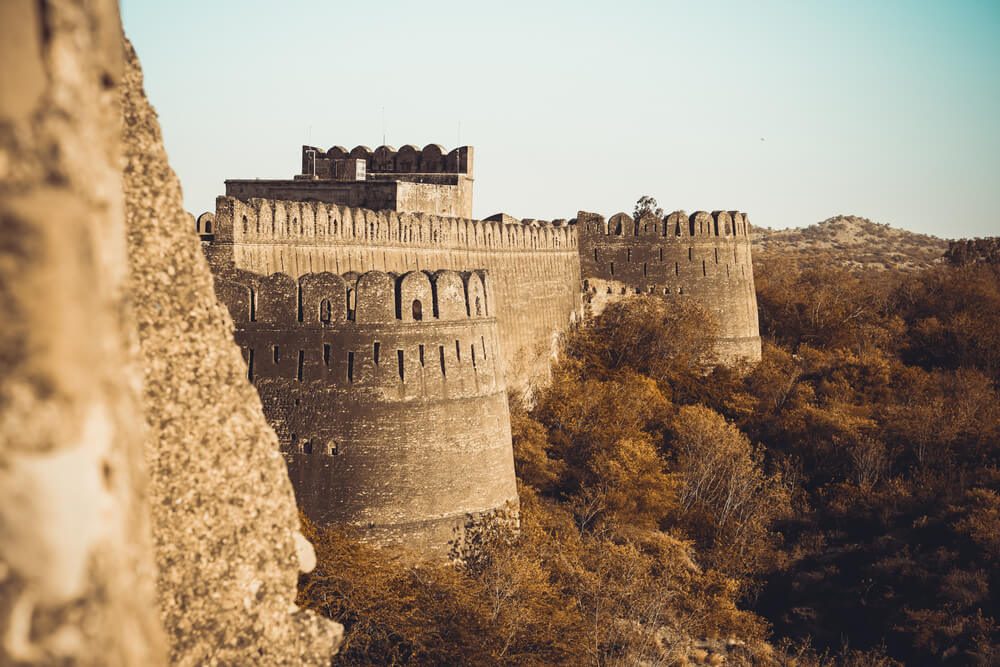
It took eight years, from 1541 to 1548, for forts construction. The Mughal Emperor Humayun finally took control of it in 1555. After being captured by Gurmukh Singh Lamba’s Sikh forces in 1825, the Sikh Empire used Rohtas Fort for administrative purposes until the British troops collapsed the Fort in 1849. Due to the Fort’s exceptional preservation of Muslim architecture and military tactics in South Asia, it became added to UNESCO’s list of World Heritage Sites in Pakistan in 1997.
Attractions Inside Rohtas Fort
Rohtas Fort is unique in its blend of Islamic and Hindu architecture. The notable attractions in Fort contain spectacular Mughal-era palaces, mosques, courtyards, intricate carvings, and latticework. It is a veritable labyrinth of passageways and chambers.
Several Monumental Gateways
As you approach the Rohtas Fort, you will see several monumental gateways. These gateways were once imposing and protective, but now they are a reminder of the Fort’s long and storied past.
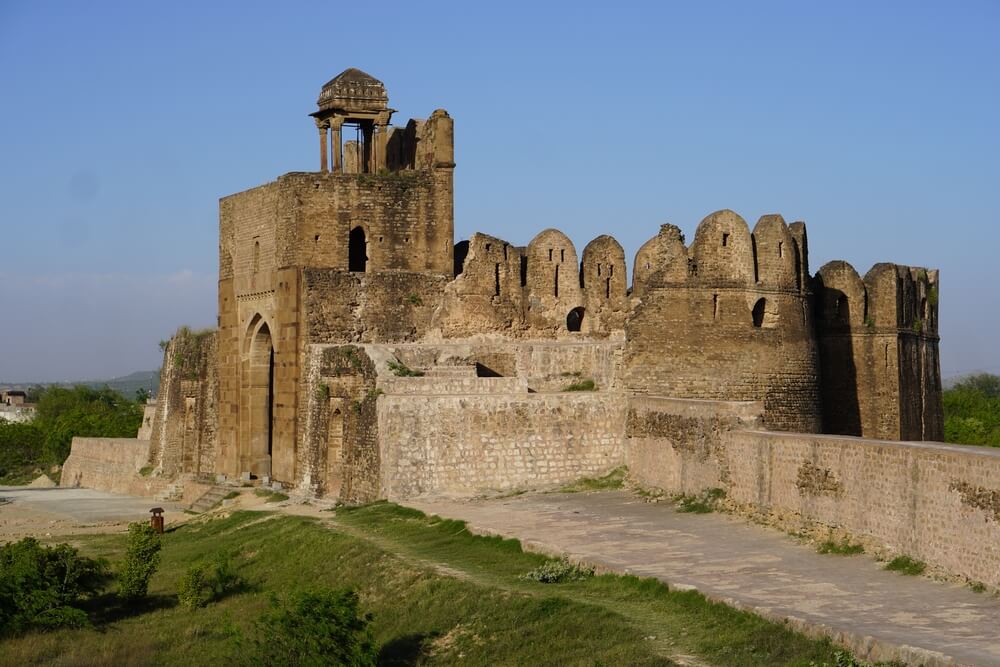
Each gateway is intricately carved and decorated, depicting scenes from everyday life and legends and myths. Walking through these gateways is like stepping back to a world where kings and queens ruled supreme and mighty armies defended their lands.
Ander Kot
Inside the Fort’s perimeter walls are two distinct areas known as Ander Kot and Main Fort. The elite’s exclusive neighborhood of Ander Kot is cut off by a dividing wall and situated on the Fort’s northwest side. The renowned Rani Mahal and Haveli Maan Singh are also here.
Haveli Maan Singh
As you go through the Fort, you’ll come across the Haveli Maan Singh. The tower, the only surviving example of Hindu architecture in the Fort, is named after one of Akbar’s greatest generals, erected sometime between 1550 and 1614. It is a brick, two-story structure that is neatly plastered and bears no resemblance to the Fort.
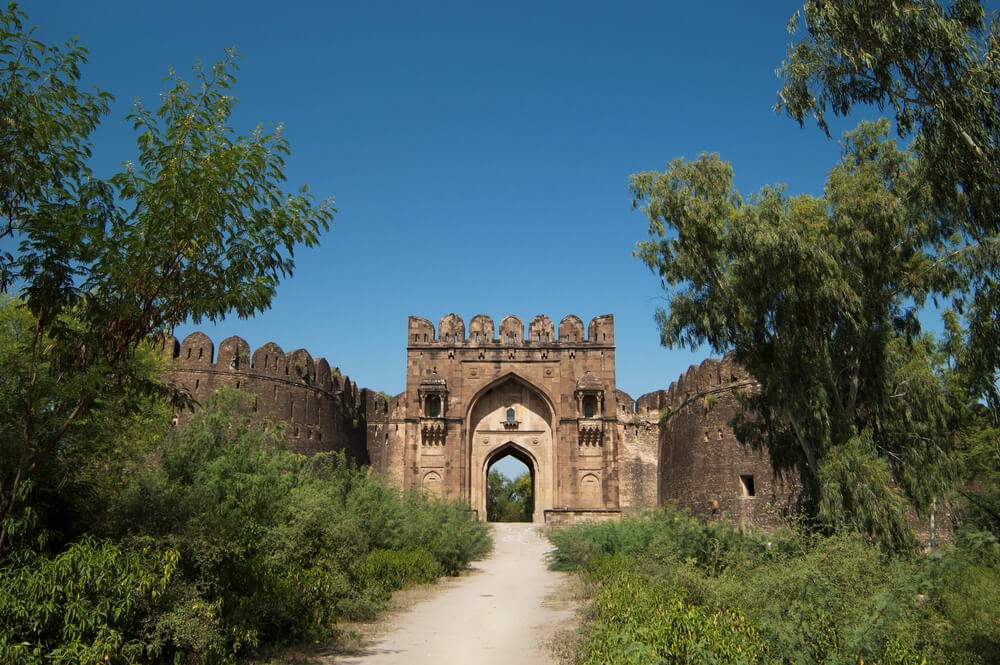
Rani Mahal
Near Haveli Man Singh is the Rani Mahal. It is a one-story building. Only one of the original four rooms still stands today. The four rooms’ foundations are still visible today. This palace was once home to the wives and daughters of the Sultan.
Royal Mosque
Royal or Shahi Mosque is one of the most awe-inspiring structures in the complex, situated close to the Kabuli Gate. The mosque has a prayer hall and a tiny open courtyard with stairs leading directly to the top of the Kabuli Gate to make it simpler for worshippers to flee the mosque in the event of an enemy attack. The mosque has round domes in the ceiling that are only visible inside the prayer hall and beautiful designs engraved into its exterior walls.
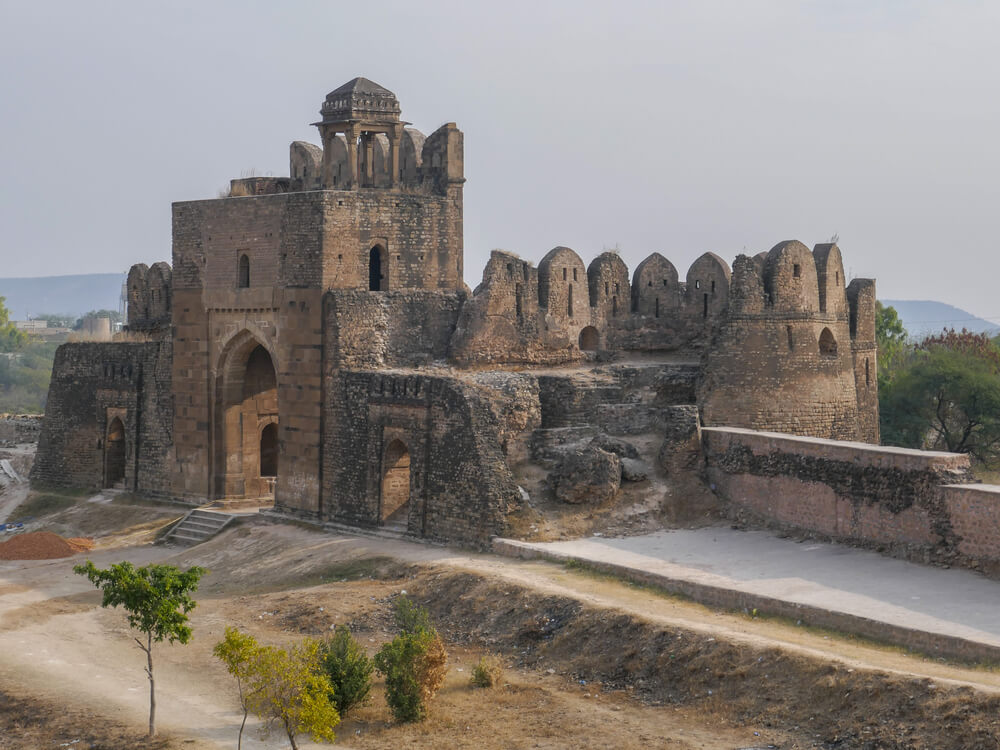
Baolis (Step Wells)
Rohtas Fort is known for its impressive Baolis (step wells), once used to collect and store water. There are two Baolis inside the Fort: The Royal Baolis and a Central Baolis.
Soldiers and livestock received water from the Central Baoli, a part of the Main Fort. The Ander Kot contains the Royal Baoli, explicitly built for the Royal family.
Architectural Features
It is an architectural masterpiece and an emblem of Rohtas district’s rich cultural heritage. The Fort comprises an intricate series of walls, bastions, and gateways, remarkably well-preserved to this day.
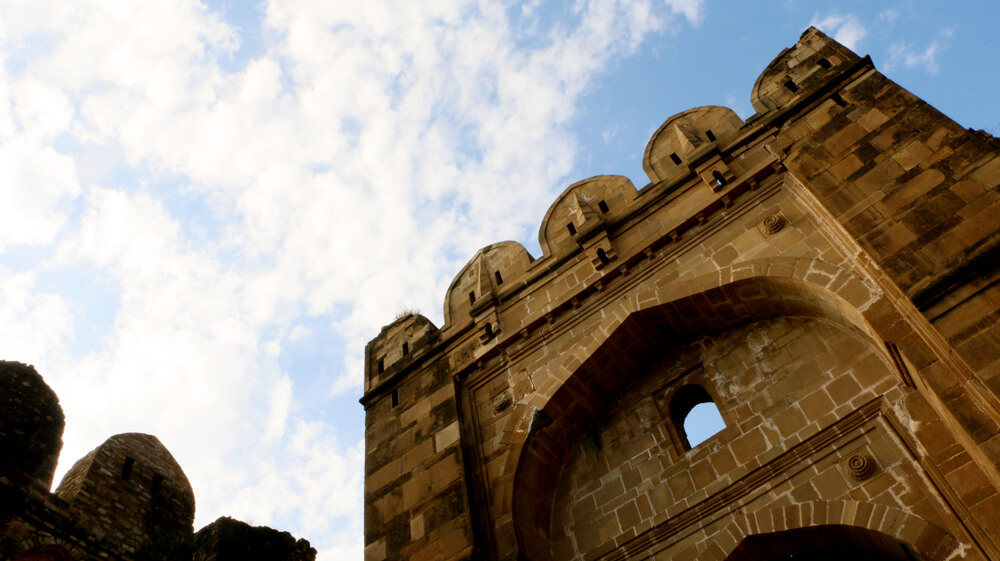
Stone Carvings and Calligraphy
Almost every wall and pillar of Mosques and their gates have stone carvings. Quranic verses, Sunflowers, and Arabic script make up most of these carvings. When you visit Rohtas Fort, be sure to explore the stone carvings. These intricate designs are a sight to behold and offer a fascinating glimpse.
Tile work and Plaster Work
The Fort is famous for its intricate tile work and plasterwork, seen on the various buildings and pavilions’ walls, roofs, and ceilings of the Shahi Mosque. The beautiful design, intricate geometric patterns of tiles, and calligraphy of plaster work have enhanced the architecture of the building.
Machicolations
What makes Rohtas Fort Jehlum so unique is its intricate design and construction. The walls contain massive, solid stone blocks and numerous machicolations. Small drains called machicolations run from the inside to the exterior walls. The soldiers inside use them to pour molten lead or other hot liquids on soldiers attempting to scale the walls. Hundreds are throughout the Rohtas Fort, each exquisitely decorated with geometric patterns.
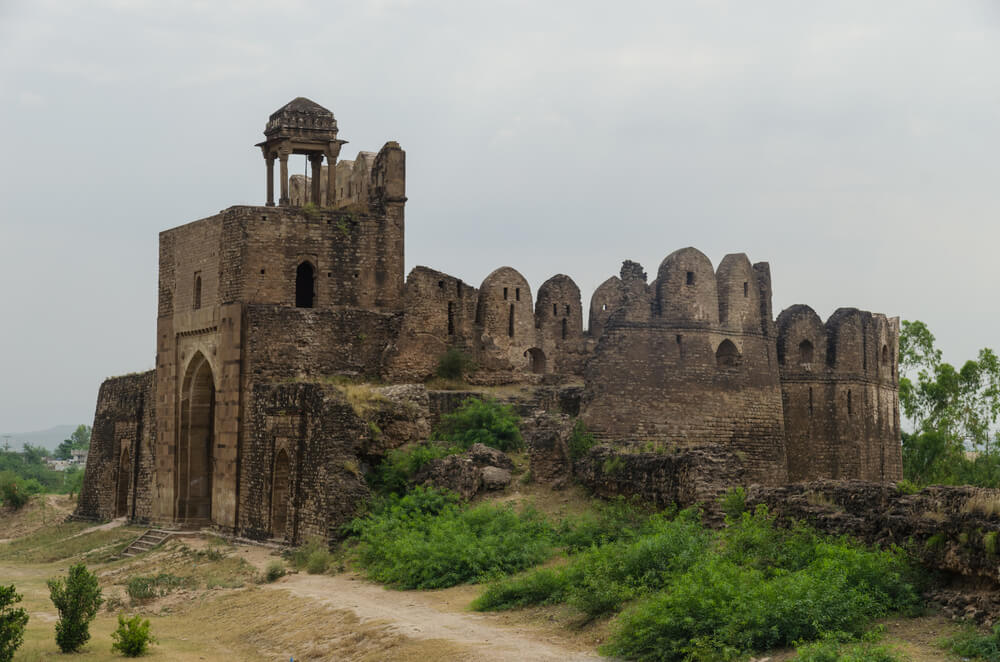
Weapons Room
The Main purpose of the construction of Rohtas Fort Jehlum was to fight against other Emperors, so there was a particular room in the Fort reserved for weapons. This room has various ancient weapons, including swords, grenades, daggers, Machine guns, rifles, arrow bows, halberds, and many more. All the weapons depict skilled craftsmanship.
Hanging Room (Phansi Ghat)
Hanging has been a popular method of punishment since the old times. A spacious compartment is present in the Fort constructed to hang the criminals and rebellious persons of the state. The entrance to the hanging room is through a metal gate. In the hanging space, they ligated the neck with a strong rope, and the criminal stands on a support, and then the Support is moved away, leaving the criminal hanging or dangling from the string. Due to the tightening of the rope around the neck, the person dies within ten to twenty minutes.
Underground Walkways
You will discover various underground walkways in the Fort. The purpose of developing underground walkways and tunnels was to hide and provide an escape route for Royal families in case of unpleasant circumstances.
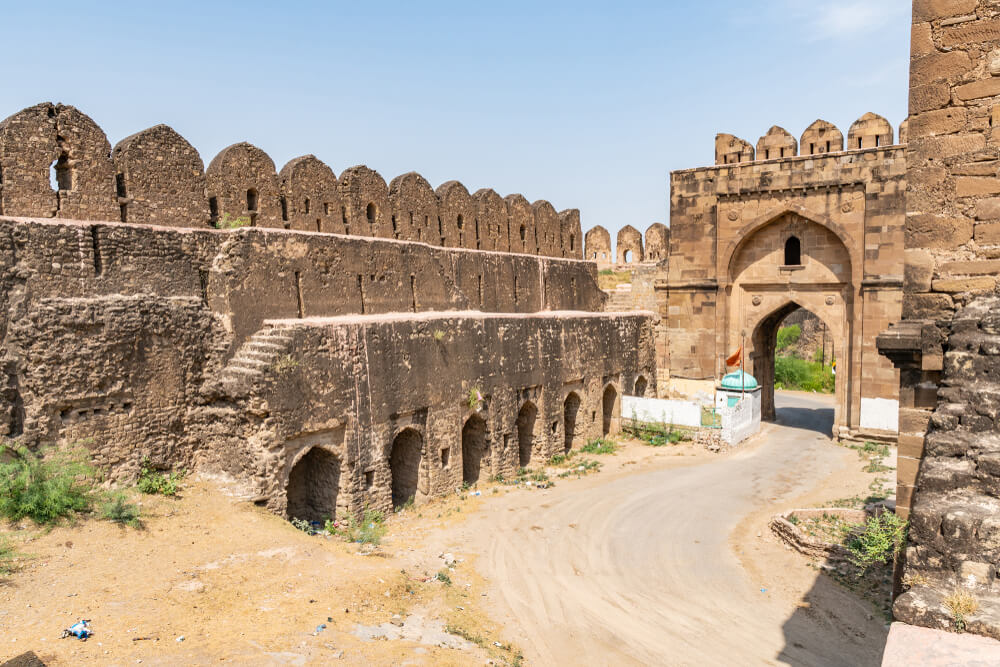
Museum
Recognizing the historical importance of Qila Rohtas, the authorities decided to build a Museum inside the Fort to showcase the royal life of King Sher Shah Suri.
There are pictures of Sher Shah Suri adorning the walls of the Museum. The Museum is displaying the following relics:
⦁ The great thing about this Museum is the display of old manuscripts of the Holy Quran dating back to the 18th century.
⦁ Coins of the Great Mughal and Suri periods are also displayed.
⦁ You can spot Armour plating shields used in the battles.
⦁ Dummies of Sher Shah Suri and his two guards and princess wear traditional clothes to give visitors the idea of how the royals used to dress.
⦁ Some swords of the late Mughal period and the British period.
Gates of Rohtas Fort
This majestic Fort consists of a total of 12 gates. All the gates depict an Ashlar stone pattern. Let us discuss the detail of the gates one by one:
Shah Chandwali and Langar Khani Gate
The gate connecting the stronghold to the main Fort is the Shah Chandwali gate. The gate’s name is to its architect, Shah Chandwali. The Langar Khani gate leads to the kitchen of the Fort. It is a double gate with a wide central rounded opening.
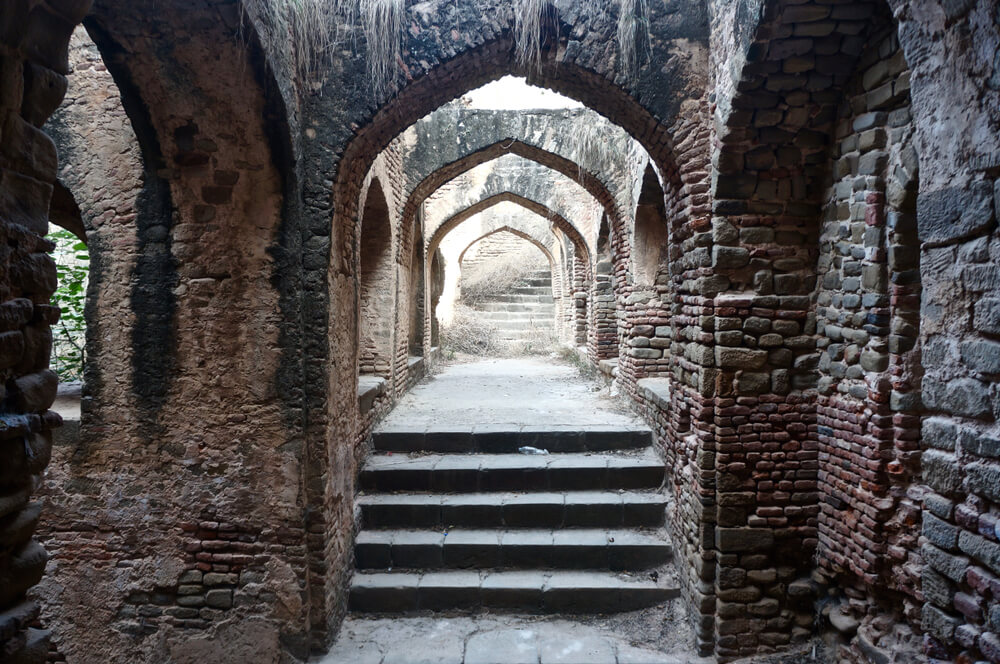
Kabuli and Khwas Khani Gate
The Himalayan Wildlife Foundation built the Rohtas Museum inside the Kabuli gate. This gate opens in the direction of Kabul. Also, it features a visitors’ information center. Khas Khanu Gate, named after a prominent general of Sher Shah Suri, is the main entrance to the Fort from the old G.T road.
Sohail and Kashmiri Gate
The ceremonial main entrance to the Fort is through the Sohail gate. This gate features rich decoration on the outer area with floral motifs. The Kashmiri gate is named so because it opens towards the direction of Kashmir.
The Gatali and Sar Gate
The Gatali gate is a single gate because it opens towards the Gatali village, an important area for crossing the Jhelum River.
The locals constructed the Sar Gate to provide a passage to the adjacent forest. An old pond is in front of this gate in the Fort. That is why it is called Sar gate ( Water Pond).
Pipli and Talaqi Gate
Pippi gate is a 2.13 meters wide small entrance. The Urdu word Talaq, which means divorce, is where Talaqi Gate gets its name. According to historical facts, Prince Sabir Suri entered this gate and suffered from a fatal attack of fever. So they considered the Talaqi gate a bad omen.
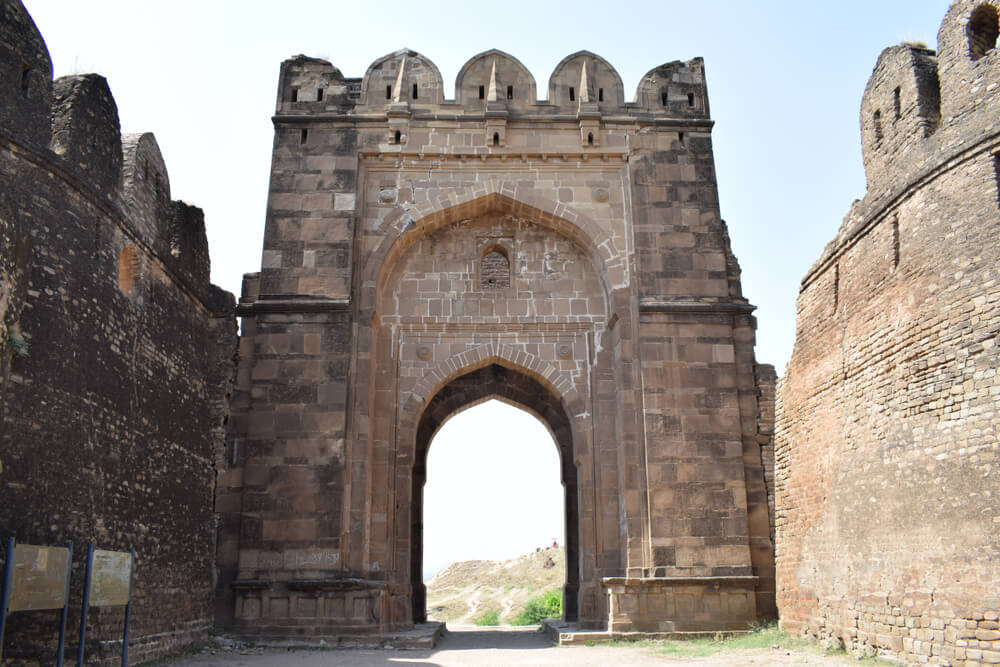
Tulla Mori and Shishi Gate
Tulla Mori entrance is located on the eastern side of the Fort and has a bastion on its front. Shishi Gate received its name from the lovely blue Shishi tiles that adorn it.
Qila Rohtas Ticket Price
Tickets cost Rs. 500 for foreigners and Rs. 20 for Pakistanis. You can buy tickets at the Fort itself. So it’s worth your time to wander around and explore all the different sections. Explore every nook and cranny—you never know what you might find!
Rohtas Fort Timings
Qila Rohtas is open every day from 8:00 AM to 5:00 PM, so there’s plenty of time to explore its many wonders. Make sure you wear comfortable shoes because there’s a lot of walking involved!
Location of Rohtas Fort Jehlum
Situated Eight kilometers south of the Grand Trunk Road in the Jehlum district, Rohtas Fort is easy to get to from Islamabad or Lahore. It’s about a two-hour drive from Islamabad and less than an hour from Lahore. It is close to the city of Dina and located about 16 km northwest of Jhelum. It is about 3 km away from Khukha. The Fort’s outer northern wall once ran parallel to the famed Shahrah-e-Azam road.
Frequently Asked Questions
Who built Rohtas Fort?
The Mughal Emperor, Sher Shah Suri, built Qila Rohtas in the 16th century. Its elevated position on the hill gave it the ideal vantage point to warn of invaders or attacks. Suri constructed Qila Rohtas to house around 30,000 military members at a time. There are 12 gates or entrances in the Fort, many of which are still in place today.
What is unique about Rohtas Fort?
Qila Rohtas is a unique illustration of early Muslim military architecture in central and south Asia. The massive walls, which cover more than 4 km and are lined with bastions and pierced by impressive gateways, make up the main fortifications. The Fort’s splendidly preserved buildings include a Shahi Mosque, Rani Mahal, and even Baolis (Step Wells). It’s an incredible structure, with walls up to 30 feet thick in some places!
Who is buried at Rohtas Fort?
Shah Chandwali is a saint who died while working and was buried close to the gate after passing away. The Shah Chandwali gate connects the main Fort and the citadel. Shah Chandwali, who refused to accept payment for his labor on this gate, is honored by the gate’s name. His memorial is still standing today.
Conclusion
Rohtas Fort is one of the world’s most majestic and well-preserved forts. Despite its age, Qila Rohtas is in excellent condition and still stands as a testimony to the engineering prowess of its creators. If you’re ever in the Jehlum region of Pakistan, visit this majestic Fort and explore its many mysteries!
There are plenty of things to see and do at Rohtas Fort, so be sure to allocate enough time to explore this excellent site. Don’t forget to take plenty of pictures – you’ll want to remember this place forever!
